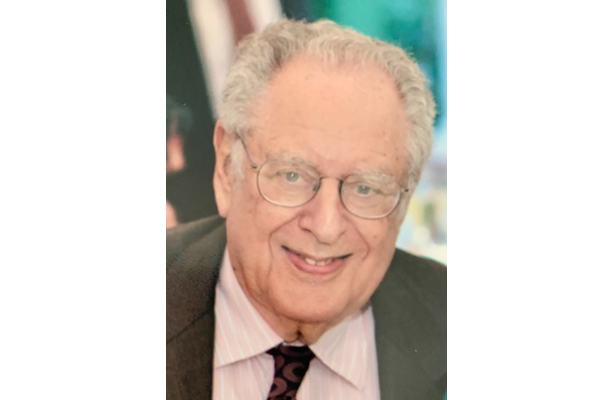News
In Memoriam: Bernard Spring
Bernard Spring, an influential architect and educator who helped transform architectural education in America by championing the integration of modern technology and community engagement into design curricula, died on January 2, 2025.
As the inaugural dean of the School of Architecture and Environmental Studies (now the Bernard and Anne Spitzer School of Architecture) at The City College of New York and later president of the Boston Architectural College, Mr. Spring advocated for a standardized architectural curriculum that would become a template for school accreditation nationwide.
His seminal 1967 work, “A Study of Education for Architectural Design,” commonly known as The Princeton Project, co-authored with Robert L. Geddes while at Princeton University, revolutionized architectural education by establishing comprehensive standards for design schools across the country.
Mr. Spring’s influence extended beyond academic reforms. His 1969 publication, “The Planning and Design Workbook for Community Participation,” became an essential resource for both nonprofessionals and practicing designers, offering detailed guidance for urban housing and community development.
Born and raised in New York City, Mr. Spring’s early interest in architecture was sparked by his high school teacher Leon Winston at William Taft High School in the Bronx. As a teenager, he counted among his friends the future filmmaker Stanley Kubrick and Leonard Sand (né Solomon) and participated in Pete Seeger’s People’s Songs movement of the 1940s.
After earning his Bachelor of Science from the University of Pennsylvania and Master of Architecture from MIT, where he studied with Louis Kahn, Mr. Spring served at the Boston Naval Shipyard during the Korean War (1951-1953), redesigning and retrofitting battle-damaged ships while pursuing civil engineering studies at MIT.
A Fulbright Scholar, he worked with the renowned architect Alvar Aalto in Finland and later taught at the Royal Academy of Fine Arts in Copenhagen. Upon returning to the United States in 1955, he taught at MIT before joining Weyerhaeuser in Seattle to lead research on building materials.
In 1960, Mr. Spring began teaching at The Cooper Union in New York while working with the firm Davis & Brody and serving as technology editor of the Architectural Forum. His innovative approach to incorporating new technology into architectural education led him to Princeton in 1965.
Mr. Spring’s vision for architectural education was shaped by his belief that good design must embrace technological advancement and community involvement. “I was always struggling to make things better,” he said recently of his efforts to reform architectural and civil engineering education.
Despite battling blindness in his later years due to retinal damage and macular degeneration, he remained an avid learner through recorded books and podcasts.
He is survived by his wife, Dr. Phyllis Spring, an educator; four children and their families, including eleven grandchildren and six great-grandchildren.
Learn more about Bernard Spring’s legacy here.


